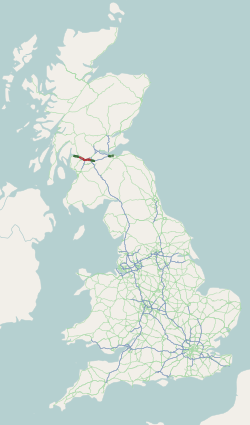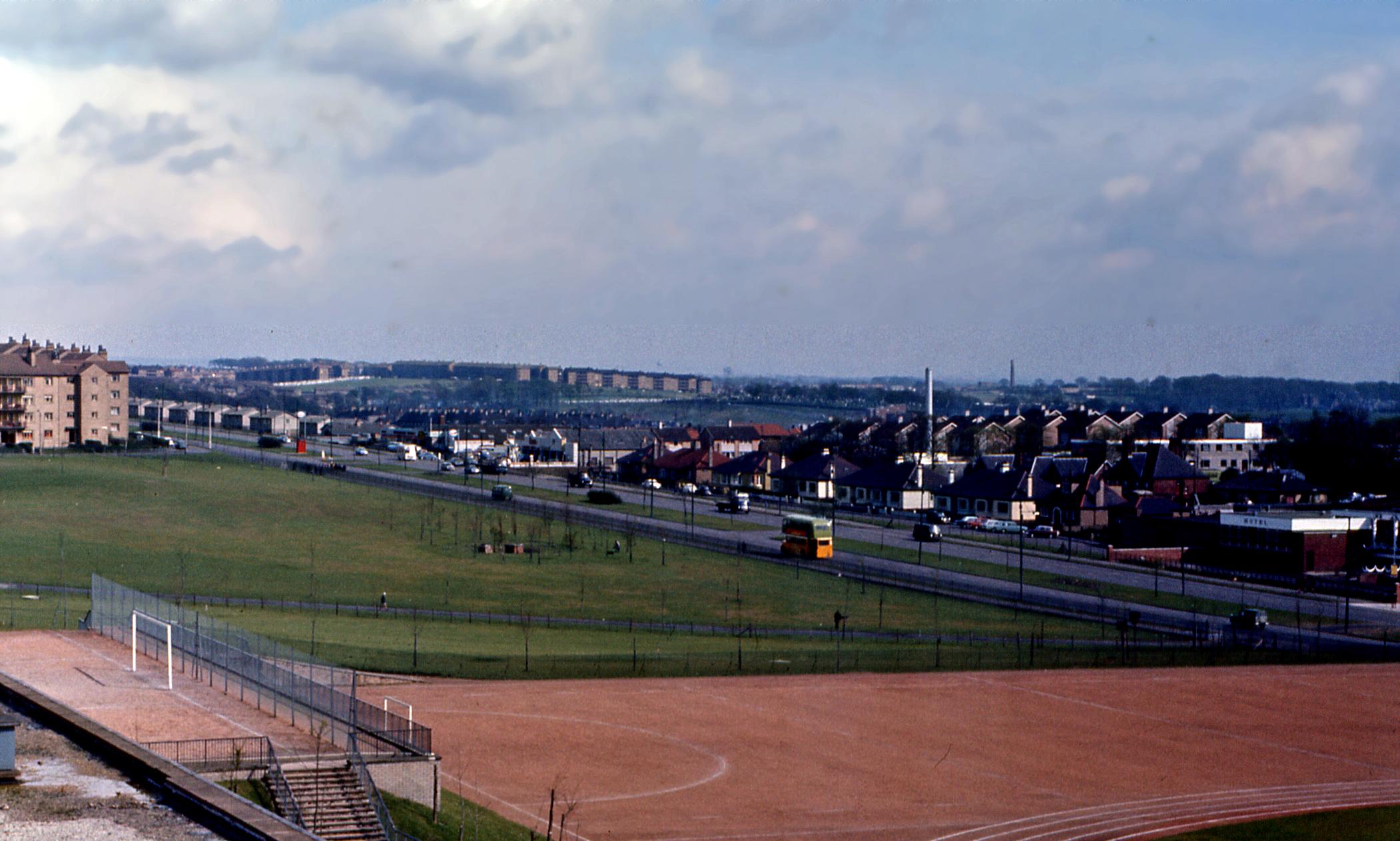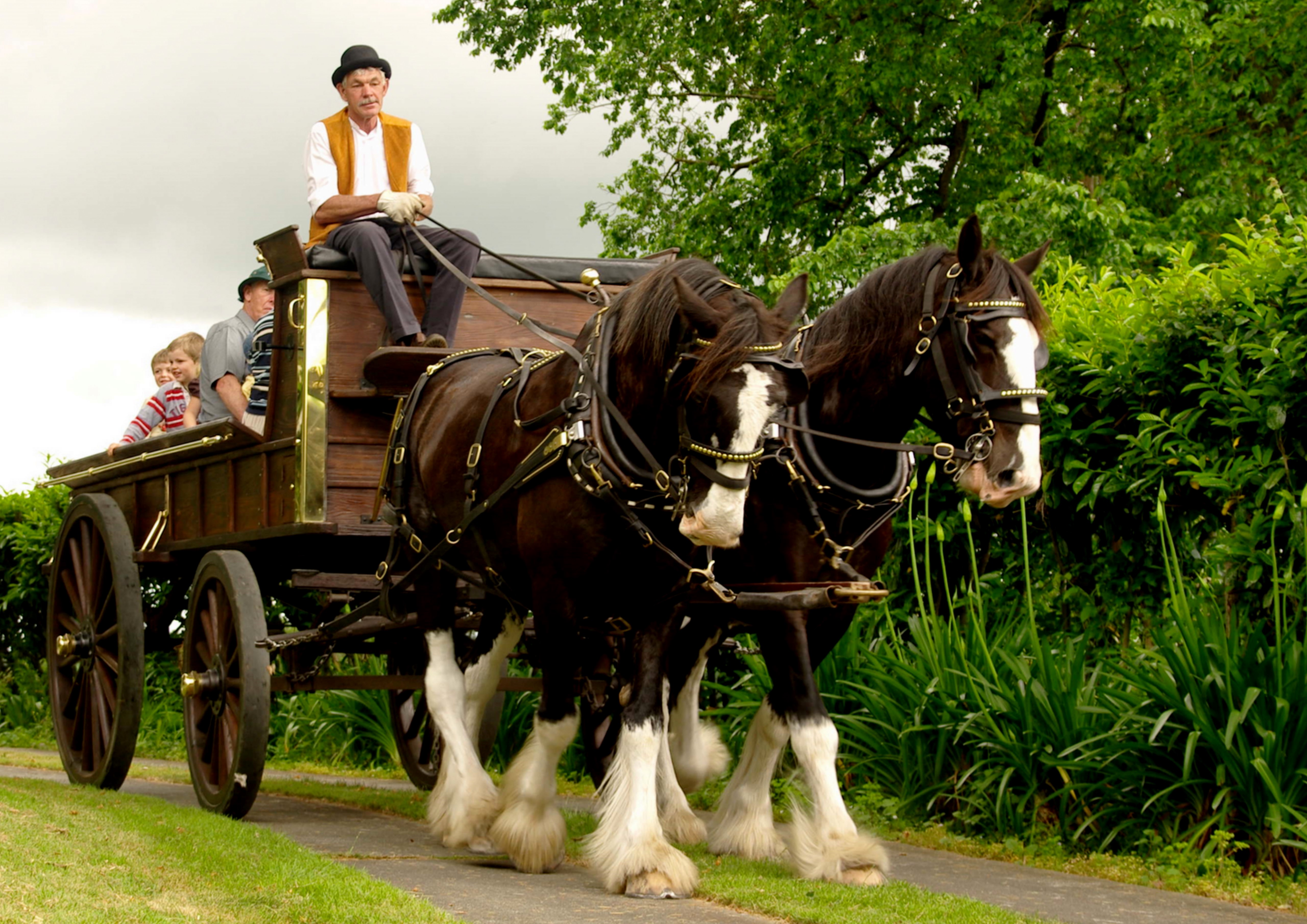|
Springhill, Glasgow
Springhill is a district in the Scottish city of Glasgow. It is situated north of the River Clyde on the eastern edge of the city, north of the areas of Baillieston and Garrowhill and west of Swinton. Springhill consists mainly of semi-detached and detached family houses built in the 1990s, as well as ''Glasgow Business Park'', a partly-completed industrial and commercial estate near to the neighbourhoods of Barlanark and Easthall, which features the local DVSA driving test centre and a 4-metre high landmark wire sculpture of a Clydesdale Horse by Andy Scott, who has other works on display in the vicinity - a phoenix in Easterhouse and a group of sirens at the water tower in Cranhill. The district has a few local shops as well as a pub/restaurant, but most other amenities are located in Baillieston or Easterhouse. Easterhouse railway station gives direct access to the centre of Glasgow and regular local bus services run along Edinburgh Road to the south of the district. Spri ... [...More Info...] [...Related Items...] OR: [Wikipedia] [Google] [Baidu] |
Andy Scott (sculptor)
Andy Scott (born 1964) is a Scottish figurative sculptor, working in galvanised steel. Biography Andy Scott graduated from Glasgow School of Art in 1986 with a Bachelor of Arts ( with honours) in Fine Art Sculpture, and in 1987 with a diploma in Postgraduate Studies. Andy Scott is a Philadelphia-based figurative sculptor who works internationally on public and private artworks. His works combine traditional draftsmanship with contemporary fabrication techniques and currently range from in height. Notable works * ''The Kelpies'', monumental horses heads completed on 27 November 2013 Falkirk, Scotland * Arria, Cumbernauld, Scotland * ''Poised'', Marischal Square, Aberdeen * ''Rise'', Glasgow Harbour, Scotland * ''COB'', Bexley, London * ''Arabesque'', Queensland, Australia * ''Argestes Aqua'', Victoria, Australia * ''River Spirit'', ''Stride'', ''Foxboy'', ''I Can See For Miles'', ''Journeys End'', ''Lifeline'': all Clackmannanshire, Scotland * '' Beacon of Hope'', Belfast, ... [...More Info...] [...Related Items...] OR: [Wikipedia] [Google] [Baidu] |
Driver And Vehicle Standards Agency
The Driver and Vehicle Standards Agency (DVSA) is an executive agency of the United Kingdom, UK Department for Transport (DfT). It carries out driving tests, approves people to be driving instructors and MOT testers, carries out tests to make sure lorries and buses are safe to drive, carries out roadside checks on drivers and vehicles, and monitors vehicle recalls. It is a separate organisation from the similarly named Driver and Vehicle Licensing Agency (DVLA). The responsibilities of DVSA only cover Great Britain. In Northern Ireland, the same role is carried out by the Driver and Vehicle Agency (DVA). History It was announced on 20 June 2013 that the Driving Standards Agency (DSA) and Vehicle and Operator Services Agency (VOSA) would merge into a single agency in 2014. The name of the new agency was confirmed as the Driver and Vehicle Standards Agency (DVSA) on 28 November 2013. DSA and VOSA closed on 31 March 2014, and DVSA took over their responsibilities on 1 April 201 ... [...More Info...] [...Related Items...] OR: [Wikipedia] [Google] [Baidu] |
Bannerman High School
Bannerman High School is a state secondary school in the Baillieston suburb of Glasgow, Scotland. It is a non-denominational, co-educational, comprehensive school within the Glasgow City Council local education authority. The school teaches pupils from years S1 to S6. It has a capacity for 1400 pupils and has approximately 100 members of teaching staff. The current head teacher is Seonaidh Black. Associated primary schools The six associated primary schools are Caledonia Primary, Carmyle Primary, Mount Vernon Primary, Garrowhill Primary, Sandaig Primary and Swinton Primary. Together with these six partner primary schools and two pre-5 establishments, the school is part of the Bannerman Learning Community. Facilities The school was opened in 1973 and is composed of 3 linked buildings. The school has playing fields, all weather pitches, a workshop theatre, games hall and academic and practical classroom areas. Facilities for pupils with physical disabilities are in place. Th ... [...More Info...] [...Related Items...] OR: [Wikipedia] [Google] [Baidu] |
M8 Motorway (Scotland)
The M8 is the busiest motorway in Scotland and one of the busiest in the United Kingdom. It connects the country's two largest cities, Glasgow and Edinburgh, and serves other large communities including Airdrie, Coatbridge, Greenock, Livingston and Paisley. The motorway is long. A major construction project to build the final section between Newhouse and Baillieston was completed on 30 April 2017. The motorway has one service station, Heart of Scotland Services, previously named Harthill due to its proximity to the village. History With the advent of motorway-building in the United Kingdom in the late 1950s, the M8 was planned as one of a core of new motorways, designed to replace the A8 road as a high-capacity alternative for intercity travel. The motorway was constructed piecemeal in several stages bypassing towns, beginning in 1965 with the opening by Minister of State for Scotland George Willis of the bypass of Harthill. In 1968 the Renfrew Bypass was opened as t ... [...More Info...] [...Related Items...] OR: [Wikipedia] [Google] [Baidu] |
A8 Road (Scotland)
The A8 is a major road in Scotland, connecting Edinburgh to Greenock via Glasgow. Its importance diminished following the construction of the M8 motorway which also covers the route between Edinburgh and Glasgow. Route and relationship to M8 Edinburgh The A8 begins at the West End of Edinburgh, in the New Town. The road originally also included Princes Street, but this stretch was declassified, as Princes Street is no longer open to all traffic. The road continues westwards into the suburbs of the city passing Murrayfield and Corstorphine, often with an accompanying bus lane. Only once the road reaches the A720 City Bypass does it become a primary route, leading out past the Royal Highland Showground at Ingliston, and Edinburgh Airport. At Newbridge, the A8 meets the start of the M8 and M9 motorways. From here the A8 is interrupted; it has been renumbered A89 until Bathgate, A7066 to Whitburn and then B7066 Harthill, until it resumes at Newhouse. Glasgow From Newhous ... [...More Info...] [...Related Items...] OR: [Wikipedia] [Google] [Baidu] |
Easterhouse Railway Station
, symbol_location = gb , symbol = rail , image = Easterhouse railway station.jpg , alt = Two railway tracks with overhead catenary electrification pass through a railway station with a small, single-storey, flat-roofed station building and stairs presumably leading to a footbridge , caption = A departing Easterhouse railway station , borough = Easterhouse, Glasgow , country = Scotland , coordinates = , grid_name = Grid reference , grid_position = , manager = ScotRail , platforms = 2 , code = EST , original = Coatbridge Bridge, NBR , postgroup = LNER , years = 1 February 1871 , events = Opened , mpassengers = , footnotes = Passenger statistics from the Office of Rail and Road Easterhouse railway station serves the Easterhouse area of Glasgow, Scotland. I ... [...More Info...] [...Related Items...] OR: [Wikipedia] [Google] [Baidu] |
Cranhill
Cranhill is an inner city district and housing scheme in the north east of Glasgow, Scotland. Cranhill was developed from public funding in the early 1950s and was originally, chiefly composed of four-storey tenement blocks surrounding a patch of grassland, which became Cranhill Park. Later development saw the building of three tower blocks (locally, ''high-flats''), surrounded by rows of terraced maisonettes. In more recent years, a number of semi-detached and detached homes have been built. The area also hosts some shops, two primary schools and nurseries, a community centre and the Cranhill water tower. Infamous for its illegal drug trade and anti-social youth culture, Cranhill was often dubbed " Smack City" in the media. The community was redeveloped from the late 1990s, although unemployment stood at 50% as of 2009. History Cranhill was built in the early 1950s on the eastern outskirts of the city to alleviate the post-war housing shortage, like other similar publicly ... [...More Info...] [...Related Items...] OR: [Wikipedia] [Google] [Baidu] |
Water Tower
A water tower is an elevated structure supporting a water tank constructed at a height sufficient to pressurize a water distribution system, distribution system for potable water, and to provide emergency storage for fire protection. Water towers often operate in conjunction with underground or surface service reservoirs, which store treated water close to where it will be used. Other types of water towers may only store raw (non-potable) water for fire protection or industrial purposes, and may not necessarily be connected to a public water supply. Water towers are able to supply water even during power outages, because they rely on hydrostatic pressure produced by elevation of water (due to gravity) to push the water into domestic and industrial water distribution systems; however, they cannot supply the water for a long time without power, because a pump is typically required to refill the tower. A water tower also serves as a reservoir to help with water needs during peak us ... [...More Info...] [...Related Items...] OR: [Wikipedia] [Google] [Baidu] |
Siren (mythology)
In Greek mythology, the sirens (Ancient Greek: singular: ; plural: ) were humanlike beings with alluring voices; they appear in a scene in the Odyssey in which Odysseus saves his crew's lives. Roman poets placed them on some small islands called Sirenum scopuli. In some later, rationalized traditions, the literal geography of the "flowery" island of Anthemoessa, or Anthemusa, is fixed: sometimes on Cape Pelorum and at others in the islands known as the Sirenuse, near Paestum, or in Capreae. All such locations were surrounded by cliffs and rocks. Sirens continued to be used as a symbol for the dangerous temptation embodied by women regularly throughout Christian art of the medieval era. Nomenclature The etymology of the name is contested. Robert S. P. Beekes has suggested a Pre-Greek origin. Others connect the name to σειρά (''seirá'', "rope, cord") and εἴρω (''eírō'', "to tie, join, fasten"), resulting in the meaning "binder, entangler", i.e. one who binds ... [...More Info...] [...Related Items...] OR: [Wikipedia] [Google] [Baidu] |
Easterhouse
Easterhouse is a suburb of Glasgow, Scotland, east of the city centre on land gained from the county of Lanarkshire as part of an expansion of Glasgow before the Second World War. The area is on high ground north of the River Clyde and south of the River Kelvin and Campsie Fells. Building began in the mid-1950s to provide better housing for people in the East End living in sub-standard conditions. At the 2001 Census, its population was 26,495. Neighbourhoods of Easterhouse include Provanhall, Kildermorie, Lochend, Rogerfield and Commonhead, as well as Wellhouse, Easthall and Queenslie which are separated from the other parts by the M8 motorway running east–west through the area. The nearby communities of Barlanark, Craigend, Cranhill, Garthamlock and Ruchazie were constructed using the same building principles and have suffered from similar problems.Auchinlea Park, Gazetteer for Scotland coal mines at Gartloch and Baillieston but mainly in the surrounding farms and e ... [...More Info...] [...Related Items...] OR: [Wikipedia] [Google] [Baidu] |
Phoenix (mythology)
The phoenix is an immortal bird associated with Greek mythology (with analogs in many cultures) that cyclically regenerates or is otherwise born again. Associated with the sun, a phoenix obtains new life by rising from the ashes of its predecessor. Some legends say it dies in a show of flames and combustion, others that it simply dies and decomposes before being born again. In the ''Motif-Index of Folk-Literature'', a tool used by folklore studies, folklorists, the phoenix is classified as motif B32.Thompson. (2001: 581). The origin of the phoenix has been attributed to Ancient Egypt by Herodotus and later 19th-century scholars, but other scholars think the Egyptian texts may have been influenced by classical folklore. Over time the phoenix motif spread and gained a variety of new associations; Herodotus, Lucan, Pliny the Elder, Pope Clement I, Lactantius, Ovid, and Isidore of Seville are among those who have contributed to the retelling and transmission of the phoenix motif. Ov ... [...More Info...] [...Related Items...] OR: [Wikipedia] [Google] [Baidu] |
Clydesdale Horse
The Clydesdale is a Scottish breed of draught horse. It is named for its area of origin, the Clydesdale or valley of the River Clyde, much of which is within the county of Lanarkshire. The origins of the breed lie in the eighteenth century, when Flemish stallions were imported to Scotland and mated with local mares; in the nineteenth century, Shire blood was introduced. The first recorded use of the name "Clydesdale" for the breed was in 1826; the horses spread through much of Scotland and into northern England. After the breed society was formed in 1877, thousands of Clydesdales were exported to many countries of the world, particularly to Australia and New Zealand. In the early twentieth century numbers began to fall, both because many were taken for use in the First World War, and because of the increasing mechanisation of agriculture. By the 1970s, the Rare Breeds Survival Trust considered the breed vulnerable to extinction. Numbers have since increased slightly. It is ... [...More Info...] [...Related Items...] OR: [Wikipedia] [Google] [Baidu] |






